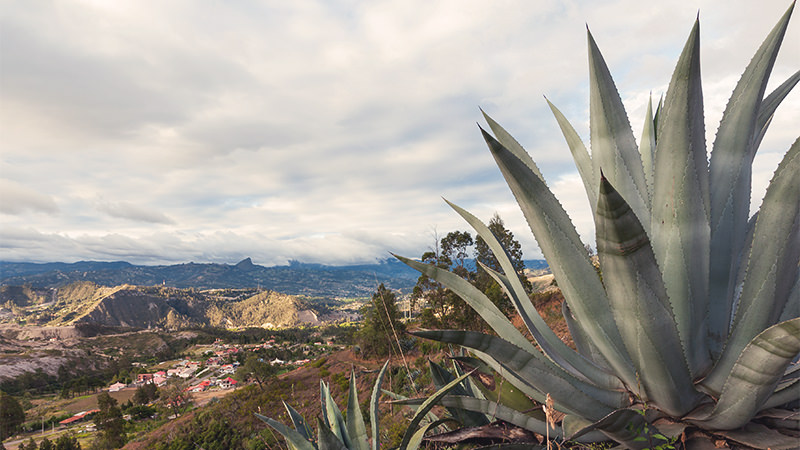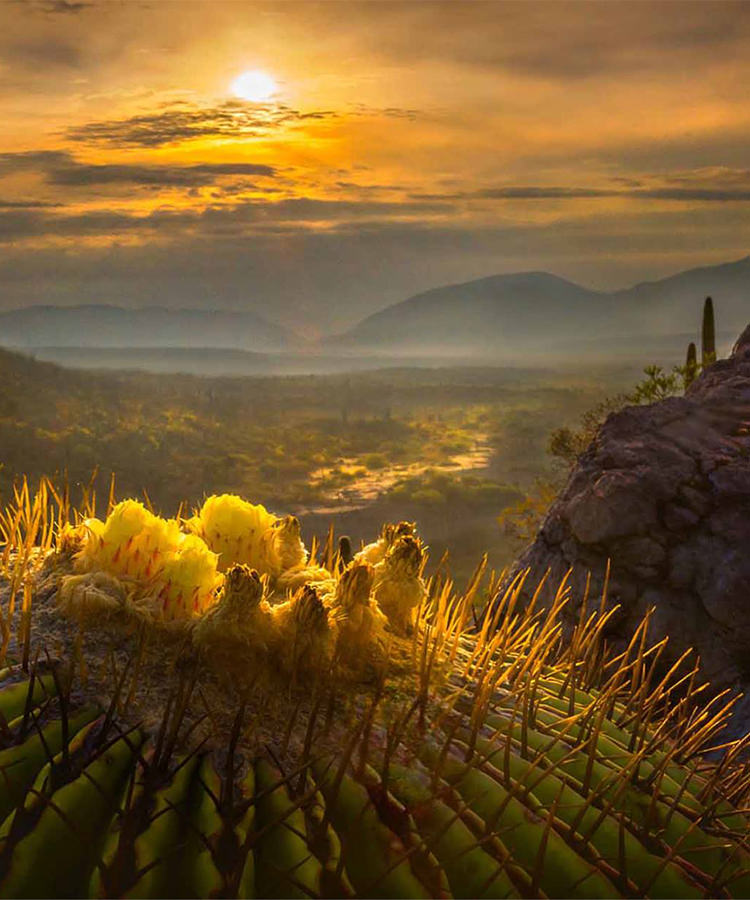If you’re familiar with wine, you’ve likely come across people who swear by terroir, the French word that roughly translates to “a sense of place.” You’ve also probably come across people who swear that it’s all marketing (or maybe you’re one of these people). But terroir, in its broadest sense, isn’t restricted to wine. There’s a strong case to be made that mezcal is a prime vehicle to express terroir, strong enough, perhaps, to convince terroir non-believers.
Mezcal can be made in the regions of Oaxaca, Durango, Guanajuato, Guerrero, San Luis Potosí, Tamaulipas, Zacatecas, Michoacan, and Puebla in Mexico. Each of those regions produces a mezcal with a much different feel and taste thanks to a wide range of variables that distinguish them. In general, northern Mexico has more of a desert environment, whereas central Mexico uses stone ovens instead of earth ovens, and coastal and southern Mexico are influenced by salt and tropical fruits.
Mountainous areas are hit with a different intensity of sunlight than valleys. Different soils drain faster than others. Wind rushes through some regions, while still humidity pushes on others. The fungi existing in the biosphere of one area are different from the fungi in another. Yeasts from one place will enhance different flavors than yeasts from another.
Danny Mena, the co-founder of Mezcales de Leyenda, is a true believer that mezcal expresses terroir. At a Leyenda tasting in New York City, Mena walked me through the brand’s special edition bottles that range from $250 to $500. The special editions were made to “showcase hyper- small producers, unique agaves, as well as biosphere reserves.” Each bottle did, in fact, taste like no other mezcal I’ve ever tried. One had a slight pickle juice note, while another was deeply salty. Terroir, Mena told me, was behind the different flavors.
“Mezcal is really all terroir,” he later tells me. Each agave variety takes a different length of time to mature, and experiences a different number of climate cycles. The agave is then cooked with trees native to the region, and open-air fermentation ensures yeasts from each specific area ferment the agave.
Mezcal expresses terroir just like a natural wine does, Mena tells me. “The only real difference would be that an agave takes multiple growing seasons, where wine has just one, so [mezcal] has that much more time to absorb the characteristics of each region,” Mena says.
But the idea of terroir — and the higher price for a special edition bottle sold on the idea of “terroir” — is disputed in some scientific circles.

Taking a stance against terroir is asking for mockery and rapid fire hate messages on social media. If not for terroir, then why would people pay top dollar for wines from certain vineyards? Why are some wines cherished and others deemed “plonk”? Why can one plot of Burgundian vines make wine worth thousands of dollars while vines 20 feet away make wine worth hundreds of dollars?
Regions, true believes of terroir maintain, are essential to a good finished product. But terroir wasn’t always a positive thing, as Bianca Bosker, the author of Cork Dork, notes in a piece for Food & Wine. In the 18th century, wines that expressed terroir were believed to have something wrong with them. They were too rustic, too plebeian. Then in 1905, Champagne growers lobbied to keep any random bubbly from calling itself “Champagne” and had the word protected. Other regions followed suit.
The whole idea of terroir is that small and independent producers are making a higher quality (and therefore more expensive) product, Joseph Bohling, an assistant professor at Portland State University, told Portland Monthly. Bohling worked on a paper titled “The Trouble with Terroir: The World of Wine in Modern France” for Cornell University Press, and he’s strongly on the “terroir-is- all-marketing” side of the debate. “It’s a story of the 20th century,” Bohling said. Around midcentury, French wine producers became very concerned about New World production and their ability to compete. “So they developed these strategies of essentially branding the land: this idea of terroir,” Bohling says. “It took a lot of hard political work for people to go, ‘Hmm, I actually like the taste of terroir.'”
In addition to the hyper-local, another by-product of the idea of terroir is the small batch. “High-yielding vines don’t cater well to the idea of terroir,” Bohling told Portland Monthly. “It’s supposed to be about small production and craftsmanship. And that way they can command a higher price.”
Whether or not you buy the idea of terroir, it is definitely a concept that producers use to justify higher costs, in mezcal as in wine. Mezcal can be made using any of the nearly 200 varieties of agave, but tying a bottle to one variety and one region makes it rare and more costly, which can be seen in the high end of Mezcales de Leyenda.
So is it worth the money? Is terroir really driving unique flavors? Or is it just a marketing ploy to fetch higher prices?
When I tasted through the special edition mezcals with Mena, he was adamant that each had achieved its unique taste and flavor profile from its terroir. And he made me a true believer. I tasted salt in the mezcals made from plants near the sea, and noted the various differences in smokiness from the different woods used to cook the agave during production.
Yes, the special editions command a price that’s unattainable for many people (me included), but there’s a reason why: Each of the regions makes a unique tasting spirit. You can’t make something that tastes like Leyendas’ Mezcales Únicos without Agave montana from a hidden valley in Tamaulipas. That specific agave only grows in two locations in the world, and both are 8,200 feet above sea level next to oak and pine trees. It’s a unique terroir that can’t be mimicked or perfectly imitated.
